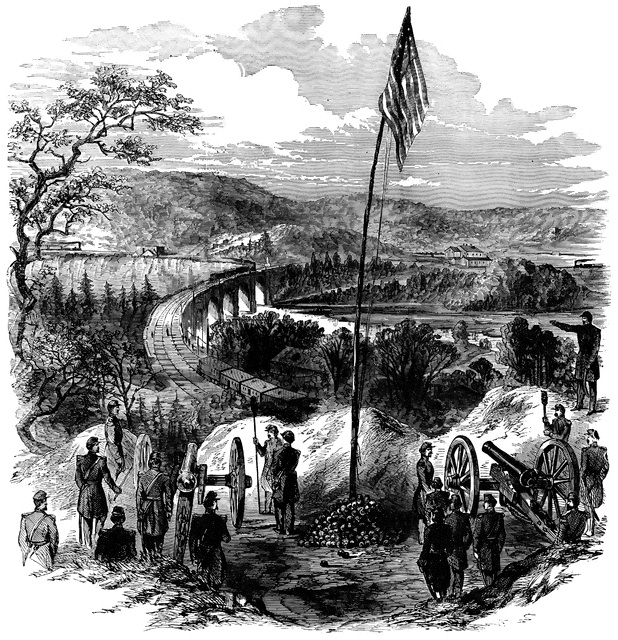Securing Relay
In the last post, we looked at the Baltimore Riot that took place early in the war. To Union forces in 1861, Baltimore was hostile territory.
Not wanting a repeat of the experience that the 6th MA had, the next group of troops coming in from the north stopped at Perryville, MD and boarded boats. They were heading to Annapolis – using the Chesapeake Bay to route around the potentially-troublesome city of Baltimore.
These men were from the 8th MA, under the command of Brig. General Benjamin Butler. His orders were to open up the route into Washington, D.C. from the north so that troops and supplies could continue to flow.
Butler landed his men at the Naval Academy on April 21, 1861, and began the work of repairing the sabotaged railroads – first, the line leading from Annapolis to the Washington branch of the B&O at Annapolis Junction, and then the Washington branch itself. Once those lines were secured, Butler turned his attention to the north, taking possession of Relay – a very small town in the Patapsco river valley – on May 5, 1861 with the 6th MA, the 8th NY Militia, and Major Cook’s battery of Boston Light Artillery.
Relay was especially important because it is the northernmost point on the Washington branch of the B&O. It’s where the line began, and where it met with the main line from Baltimore to points west in the Ohio valley. And – most importantly – at the time of the Civil War, this was the ONLY railroad going into Washington, D.C.

In order for the Washington branch to be built in the first place, a bridge had to be constructed to cross the Patapsco river. That bridge is the Thomas Viaduct – named for the first President of the B&O railroad – and it remains the longest stone-arch bridge on a curve in the world, still carrying trains on their way to the capital to this day.
This bridge and the junction next to it were of extreme strategic importance to the Union cause. The army HAD to control this place, and being just 7 miles from Baltimore, it was facing real threats.

Butler placed his guns and deployed his 2,000 troops along the tracks in the area to ensure that no more sabotage could take place. All trains out of Baltimore were stopped and inspected to see if they were carrying men or materiel destined for the Confederacy, but this policy didn’t last long. At the request of the owners of the B&O, Butler agreed to back down somewhat and only perform random searches.
There will be one more exciting incident along the B&O, though. A tip about a secret Confederate weapon will cause some of Butler’s men to leave Relay to find and capture some potentially-threatening cargo.
See now I may have to read this more often. Ever consider writing a book?